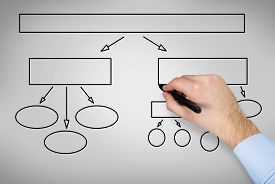 Deep Learning in Action | A talk by Juergen Schmidhuber, PhD at the Deep Learning in Action talk series in October 2015. He is professor in computer science at the Dalle Molle Institute for Artificial Intelligence Research, part of the University of Applied Sciences and Arts of Southern Switzerland.*
Deep Learning in Action | A talk by Juergen Schmidhuber, PhD at the Deep Learning in Action talk series in October 2015. He is professor in computer science at the Dalle Molle Institute for Artificial Intelligence Research, part of the University of Applied Sciences and Arts of Southern Switzerland.*
Juergen Schmidhuber, PhD | I review 3 decades of our research on both gradient based and more general problem solvers that search the space of algorithms running on general purpose computers with internal memory.
Architectures include traditional computers, Turing machines, recurrent neural networks, fast weight networks, stack machines, and others. Some of our algorithm searchers are based on algorithmic information theory and are optimal in asymptotic or other senses.
Most can learn to direct internal and external spotlights of attention. Some of them are self-referential and can even learn the learning algorithm itself, recursive self-improvement. Without a teacher, some of them can reinforcement learn to solve very deep algorithmic problems — involving billions of steps — not feasible for more recent memory based deep learners.
And algorithms learned by our long short term memory recurrent networks defined the state of the art in handwriting recognition, speech recognition, natural language processing, machine translation, image caption generation, etc. Google and other companies made them available to over a billion users.
about | The event Deep Learning in Action is organized by the Association of Computing Machinery* — Munich, Germany student chapter. The chapter advances computing as a science and profession by supporting and training the next generation. They invite distinguished speakers from academia and industry to speak at lecture halls, encouraging students to present their hacks publicly, and providing opportunities to explore latest tech with the chapter’s hackspace and the forefront of computer research with its student labs — to collaborate, define and solve tomorrow’s problems.
 related reading:
related reading:
Deep Learning in Action | main
Wikipedia | Juergen Schmidhuber, PhD
Wikipedia | algorithm
Wikipedia | artificial intelligence
Wikipedia | artificial neural networks
Wikipedia | automated reasoning
Wikipedia | deep learning
Wikipedia | machine learning
Wikipedia | natural language processing
University of Applied Sciences + Arts of Southern Switzerland | Dalle Molle Institute for Artificial Intelligence Research
University of Applied Sciences + Arts of Southern Switzerland | Juergen Schmidhuber, PhD
blog | How bio inspired deep learning keeps winning competitions
Fast ML | Juergen Schmidhuber PhD answers from Reddit “ask me anything”
Association of Computing Machinery | main
Association of Computing Machinery | student chapter of Munich, Germany: main
Association of Computing Machinery | student chapter of Munich, Germany: YouTube channel

 about | Juergen Schmidhuber, PhD is a German computer scientist and artist known for his work on machine learning, artificial intelligence, artificial neural networks, digital physics, and low complexity art. His contributions also include generalizations of Kolmogorov complexity and the Speed Prior. From 2004 to 2009 he was professor of cognitive robotics at the Technical University of Munich.
about | Juergen Schmidhuber, PhD is a German computer scientist and artist known for his work on machine learning, artificial intelligence, artificial neural networks, digital physics, and low complexity art. His contributions also include generalizations of Kolmogorov complexity and the Speed Prior. From 2004 to 2009 he was professor of cognitive robotics at the Technical University of Munich.
Since 1995 he has been co-director of the Dalle Molle Institute for Artificial Intelligence Research* — part of the University of Applied Sciences and Arts of Southern Switzerland.*
Between 2009 and 2012, the recurrent neural networks and deep feed-forward neural networks developed in his research group, have won 8 international competitions in pattern recognition and machine learning. He was elected to the European Academy of Sciences and Arts in 2008.
* IDSIA is the Dalle Molle Institute for Artificial Intelligence Research
* SUPSI is the University of Applied Sciences and Arts of Southern Switzerland
* ACM is the Association of Computing Machinery
